The White Horse of Uffington: A Bronze Age Enigma
Carved into a chalk hillside in Oxfordshire, England, the White Horse of Uffington is a breathtaking prehistoric geoglyph, dating back roughly 3,000 years to the Bronze Age. This iconic figure, stretching 110 meters (360 feet) across the landscape, is one of Britain’s oldest and most enigmatic monuments, its stark white form standing in vivid contrast to the rolling green hills. Its origins, purpose, and enduring preservation make it a captivating relic of ancient human creativity.
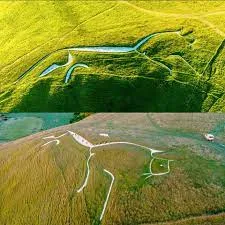
A Masterpiece in Chalk
The White Horse was created by digging deep, curved trenches into the hillside and filling them with white chalk rubble, a technique that ensures its visibility from miles away. Its stylized, almost abstract design—flowing lines suggesting a galloping horse—sets it apart from later, more realistic hill figures in Britain. Radiocarbon dating of soil samples places its creation around 1200–800 BCE, making it a remarkable testament to Bronze Age artistry and engineering.

Theories and Mysteries
The purpose of the White Horse remains shrouded in mystery. Some scholars propose it was a tribal emblem, marking territory or identity for a local community. Others suggest a religious significance, possibly linked to rituals or deities associated with horses, which held symbolic importance in Bronze Age cultures. Another theory posits it as an astronomical marker, aligned with celestial events, though no definitive evidence confirms this. The horse’s minimalist design fuels speculation, inviting interpretations that reflect the imaginations of both ancient creators and modern observers.
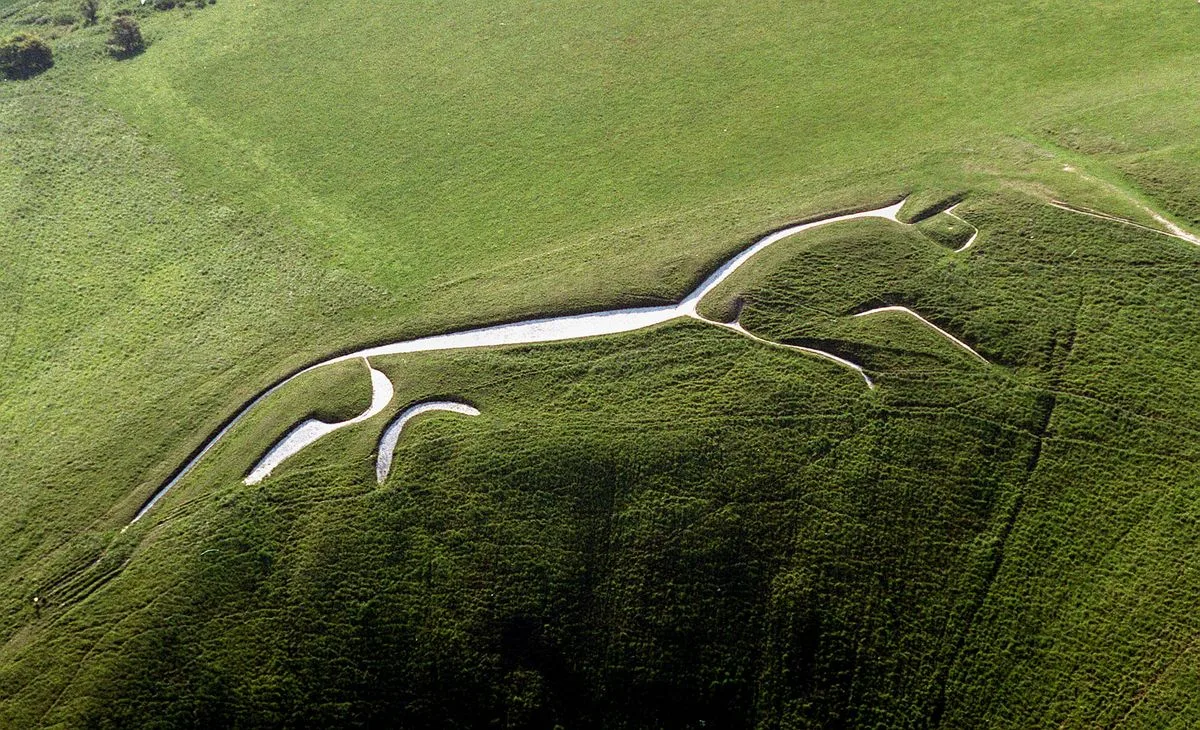
The Tradition of Scouring
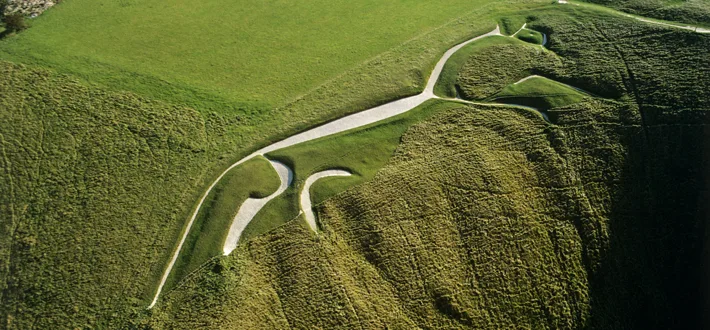
For millennia, local communities have preserved the White Horse through “scouring,” a communal effort to clear weeds, repair trenches, and replenish the chalk. This tradition, documented as early as the Middle Ages, often included festivals with games, music, and feasts, blending maintenance with cultural celebration. Scouring ensured the horse’s survival against erosion and overgrowth, a testament to the enduring bond between the monument and those who live near it.
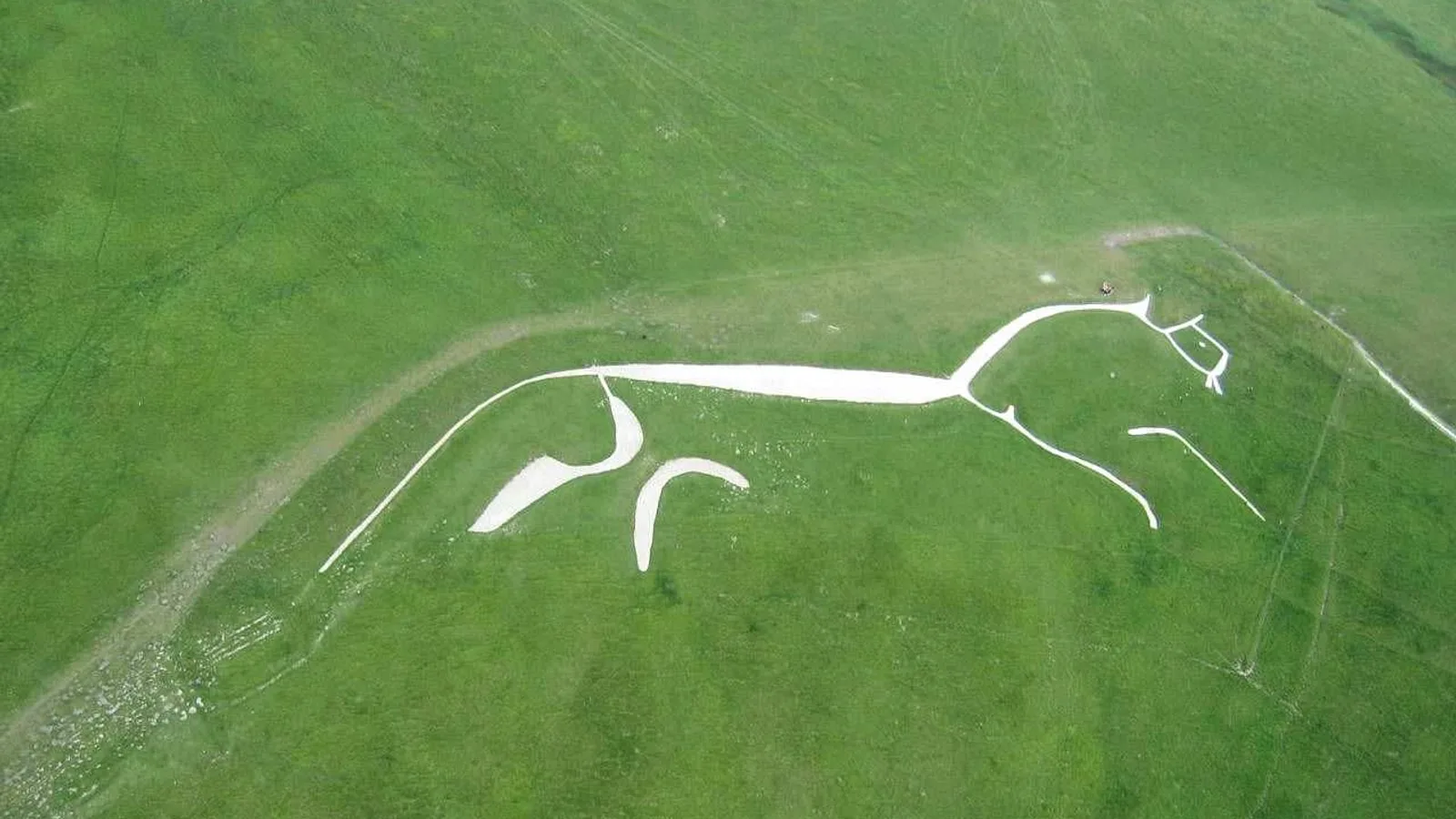
A Protected Legacy
Today, the White Horse of Uffington is a protected historic site, managed by the National Trust and designated as a Scheduled Ancient Monument. Its preservation reflects both its cultural significance and the ongoing commitment to safeguarding Britain’s ancient heritage. Visible from great distances, it continues to draw visitors, archaeologists, and artists, all captivated by its elegance and mystery.
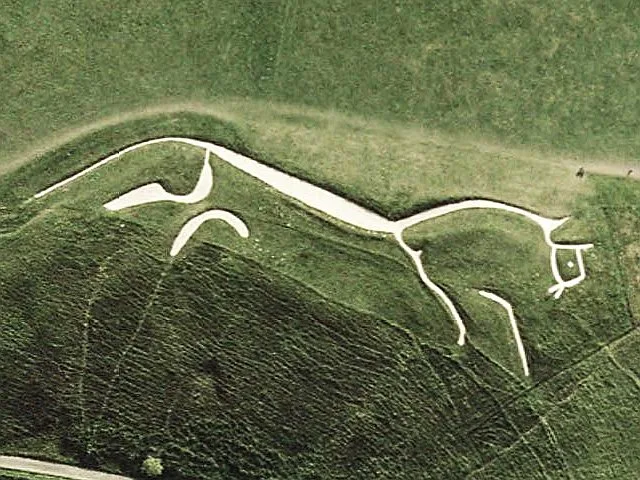
A Window to the Past
The White Horse of Uffington is more than a geoglyph; it is a bridge to the Bronze Age, offering glimpses into the beliefs, skills, and priorities of a long-lost culture. Its sleek lines and enduring presence remind us of humanity’s impulse to create lasting marks on the world, even in the face of time’s relentless passage. As it gallops across the Oxfordshire hills, the White Horse remains a powerful symbol of Britain’s ancient past and the mysteries that still linger.


